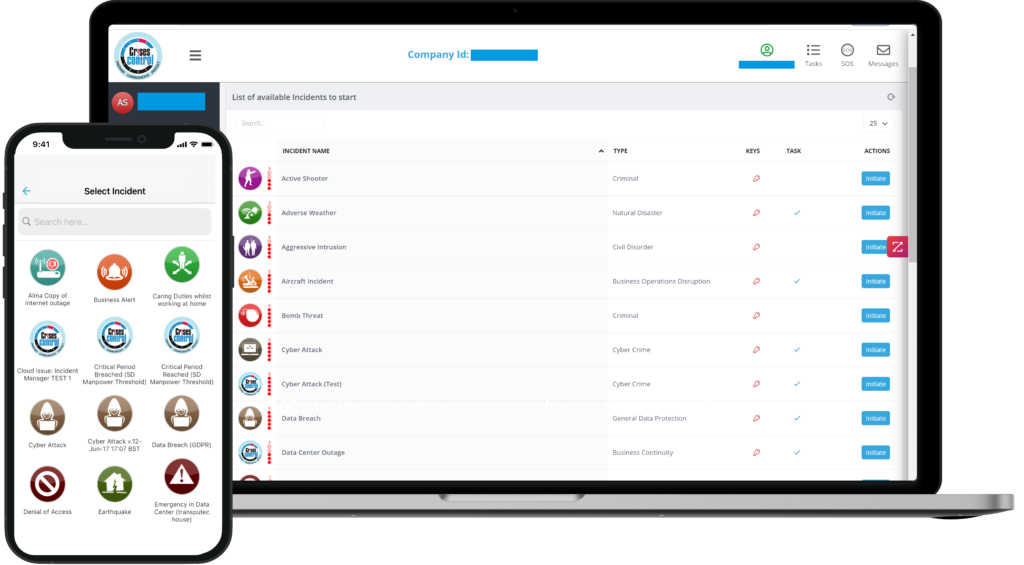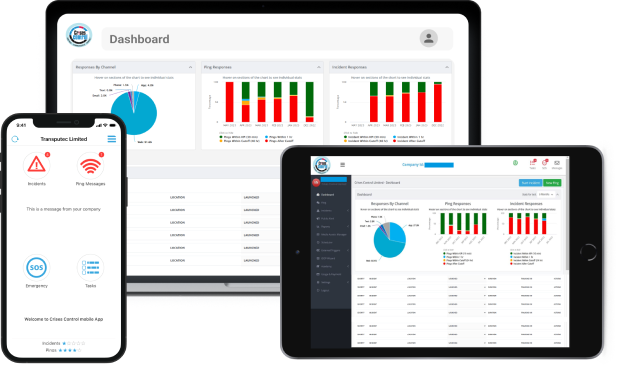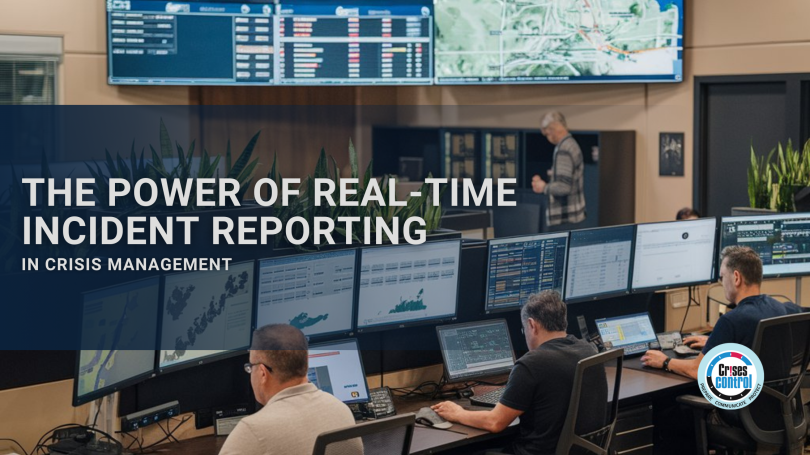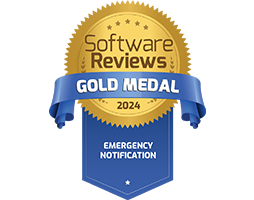Written by Ikram Tassi | Marketing
In today’s fast-moving business world, crises are inevitable. Whether it’s a security breach, a natural disaster, or an operational disruption, the ability to respond quickly can determine how well your organisation manages the crisis—and whether it recovers successfully. One of the most crucial factors in crisis management is real-time incident reporting. It allows teams to act immediately, make informed decisions, and minimise the impact of the crisis.
In this blog, we’ll discuss why real-time incident reporting is vital to effective crisis management, how it enhances incident response, and how Crises Control can help you streamline your reporting processes.
What is Real-Time Incident Reporting?
Real-time incident reporting means logging an incident as soon as it occurs and immediately communicating it to key stakeholders. Unlike traditional reporting methods, which often rely on outdated tools like phone calls, emails, or manual logs, real-time incident reporting ensures that everyone involved in crisis management has access to the latest, most accurate information.
For example, if there’s a data breach in your company’s IT system, real-time reporting will instantly notify your IT security team, management, and relevant external partners (like vendors or customers) about the breach. This enables everyone to take immediate action based on up-to-the-minute data, rather than waiting for updates that could delay the response.
Why Real-Time Incident Reporting Matters in Crisis Management
1. Faster, Smarter Decision-Making
In a crisis, decisions need to be made fast. The faster you understand the full scope of an incident, the quicker you can act—and the better equipped you are to limit potential damage. Real-time reporting cuts down the delay between identifying an issue and taking action.
Without real-time updates, information can become outdated, leading to decisions based on incomplete or inaccurate data. This can cause confusion, delays, and inefficiencies. Real-time reporting ensures decision-makers have the right information at their fingertips, enabling them to react appropriately and swiftly.
2. Better Resource Allocation
A crisis is a time when resources—whether human, financial, or material—need to be deployed quickly and effectively. Real-time reporting gives crisis managers an instant view of the situation, allowing them to allocate resources in real time.
For instance, if an outage occurs in a major system, real-time incident reporting helps you identify which areas need attention immediately (e.g., your customer service team to handle complaints or IT support to fix the issue). This data-driven approach helps ensure that the right teams are focused on the right tasks from the start, minimising wasted effort and reducing the overall impact of the crisis.
3. Clearer Communication Across Teams
During a crisis, communication can quickly break down, especially when people are working from different locations or departments. Real-time incident reporting streamlines communication and ensures that everyone is on the same page. Everyone—from your management team to your front-line employees—can access the same up-to-date information, improving alignment and reducing misunderstandings.
In large organisations, crises often involve multiple teams: IT, HR, legal, customer service, operations, and more. If the communication is not clear or instant, you risk delays or mixed signals. For example, in the event of a cyber attack, knowing immediately which systems have been compromised and the scope of the attack helps your IT team contain the issue while management starts handling external communication.
Real-time reporting facilitates smooth communication, so all teams can act quickly and efficiently, without waiting for updates or scrambling to clarify details.
4. A Better Response, Less Impact
The quicker a crisis is addressed, the less damage it can cause. Whether it’s a physical disaster like a fire or a digital one like a security breach, early response is key to limiting damage. Real-time reporting ensures that the right teams respond to the crisis immediately, which helps prevent escalation and minimise losses.
A delayed response can lead to more severe damage or even loss of life—especially in dangerous environments like factories, hospitals, or power plants.
By reporting the incident in real time, teams can take immediate action, preventing further damage and ensuring a more effective recovery.

Interested in our Incident Management Software?
Customise your Crisis Incident Management Software to meet your specific needs with our flexible tools & stay connected and informed during the crisis and incident management process
The Role of Crisis Management Software in Real-Time Incident Reporting
Real-time reporting is a vital part of effective crisis management, but it’s impossible to manage without the right tools. Crisis management software is designed to centralise and automate reporting, streamlining the entire process so teams can respond quickly. Crises Control is an example of such software that offers all the tools needed for effective real-time incident reporting.
How Crises Control Makes Real-Time Incident Reporting Easy
Crises Control is a powerful platform that helps organisations report incidents as they happen, track responses in real time, and improve coordination during a crisis. Below are some of the features that make Crises Control an invaluable tool for incident management:
1. Incident Manager: Easy and Efficient Reporting
The Incident Manager feature in Crises Control enables team members to quickly log incidents as soon as they happen. The interface is user-friendly, allowing employees at all levels to report issues with just a few clicks. The system supports detailed, customisable templates that can be used for various types of incidents—whether it’s an IT outage, a safety breach, or a public relations crisis.
This immediate logging of incidents ensures that no critical information is missed, and that the crisis management team has full visibility into the situation from the start. It eliminates the need for phone calls, emails, or lengthy manual reports, reducing delays and speeding up the response time.
2. Automated Alerts and Notifications
Once an incident is reported, Crises Control automatically sends real-time alerts and notifications to all relevant stakeholders—via email, SMS, phone call or mobile app notifications. These alerts ensure that decision-makers and teams are instantly informed of any incidents, whether they are on-site or working remotely.
For example, if a critical IT system goes down, the IT team is immediately notified. Meanwhile, customer service and PR teams can be alerted to prepare for customer inquiries or potential public fallout. This automated, rapid response mechanism is a key component of real-time reporting.
3. Centralised Communication
Crises Control’s platform integrates communication tools, allowing teams to collaborate effectively during an incident. Whether through chat, task assignments, or live updates, all team members can stay on the same page and make decisions based on real-time information.
This centralised communication prevents the chaos that can come with a crisis and ensures a unified, organised response. Teams don’t need to waste time searching through emails or multiple platforms for the latest information—everything is in one place.
4. Detailed Audit Trail
Every action taken during a crisis is logged and recorded in real time. This audit trail ensures that your organisation has a complete and accurate record of how the crisis was handled, from the initial incident report to the final resolution. This is not only essential for post-crisis analysis and compliance, but also helps you identify areas for improvement.
The detailed records of incident handling provide invaluable insights that can be used to refine crisis response strategies and improve future planning.
The Benefits of Real-Time Incident Reporting with Crises Control
1. Faster Response Times
With real-time reporting, your teams are always prepared to act immediately, reducing the time spent on identifying and confirming the problem. This is especially critical in high-stakes scenarios where every second counts.
2. Improved Accountability
Every action and update is logged in real time, ensuring that all teams are held accountable for their role in managing the crisis. This transparency helps prevent misunderstandings and promotes a culture of responsibility.
3. Better Decision-Making
Access to real-time data means that managers and teams can make better decisions quickly. They have up-to-the-minute information at their fingertips, allowing them to allocate resources effectively and adjust strategies as needed.
4. Enhanced Collaboration
When everyone has access to the same data, collaboration becomes much easier. Team members can communicate efficiently, coordinate their actions, and focus on the collective goal: resolving the crisis as quickly and effectively as possible.
Conclusion: Take Control of Your Crisis Management with Real-Time Incident Reporting
Real-time incident reporting is no longer a luxury; it’s a necessity in today’s fast-paced world. The quicker you can identify, report, and respond to a crisis, the more effectively you can mitigate its impact. Crises Control’s platform provides the tools needed to handle crises with speed and efficiency, from automated alerts to real-time collaboration.
Ready to experience how Crises Control can transform your crisis management approach? Contact us today for a free demo and see how our platform can help you manage incidents with speed, precision, and confidence.
Request a FREE Demo









